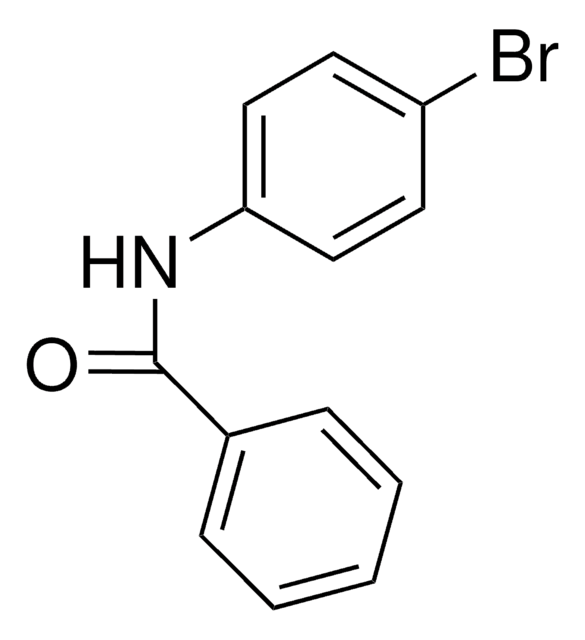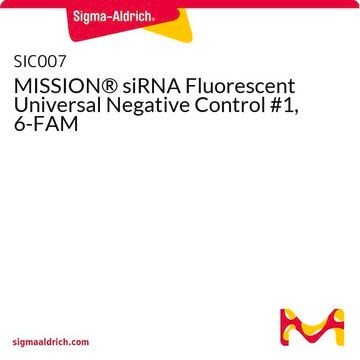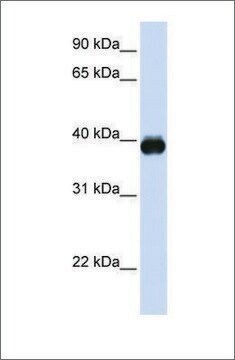推薦產品
一般說明
Sigma′s Mission Lenti-miRs express miRNAs from a common backbone, whose structure meets requirements for accurate Dicer processing and a partially complementary strand is designed to mimic the base pairing pattern in the backbone structure using a proprietary algorithm. Oligos containing the microRNA sequences are cloned into the TRC2-pLKO-puro vector. Each miRNA construct has been cloned and sequence verified. Mature microRNA sequences are obtained from miRBase.
Lentiviral transduction particles are produced from sequence-verified lentiviral plasmid vectors. Oligos containing the microRNA sequences are cloned into the TRC2-pLKO-puro vector. Co-transfection of this vector into the appropriate cell line with compatible packaging plasmids produces viral particles that can be used to transduce mammalian cells. The polymerase II promoter, elongation factor 1 alpha (EF1A), was chosen to drive miRNA expression needed for reverse transcription of viral RNA and integration of viral DNA into the host cell genome. Additionally, the Woodchuck Hepatitis Post-Transcriptional Regulatory element allowing for enhanced expression of transgenes delivered by lentiviral vectors. This lentiviral vector also carries a puromycin resistance gene for selection of cells. Unlike murine-based MMLV or MSCV retroviral systems, lentiviral-based particles permit efficient infection and integration of the specific miRNA construct into differentiated and non-dividing cells, such as neurons and dendritic cells.
Lentiviral transduction particles are produced from sequence-verified lentiviral plasmid vectors. Oligos containing the microRNA sequences are cloned into the TRC2-pLKO-puro vector. Co-transfection of this vector into the appropriate cell line with compatible packaging plasmids produces viral particles that can be used to transduce mammalian cells. The polymerase II promoter, elongation factor 1 alpha (EF1A), was chosen to drive miRNA expression needed for reverse transcription of viral RNA and integration of viral DNA into the host cell genome. Additionally, the Woodchuck Hepatitis Post-Transcriptional Regulatory element allowing for enhanced expression of transgenes delivered by lentiviral vectors. This lentiviral vector also carries a puromycin resistance gene for selection of cells. Unlike murine-based MMLV or MSCV retroviral systems, lentiviral-based particles permit efficient infection and integration of the specific miRNA construct into differentiated and non-dividing cells, such as neurons and dendritic cells.
推薦產品
Two negative controls are available: NCLMIR001 and NCLMIR002
法律資訊
MISSION is a registered trademark of Merck KGaA, Darmstadt, Germany
儲存類別代碼
12 - Non Combustible Liquids
水污染物質分類(WGK)
WGK 3
閃點(°F)
Not applicable
閃點(°C)
Not applicable
分析證明 (COA)
輸入產品批次/批號來搜索 分析證明 (COA)。在產品’s標籤上找到批次和批號,寫有 ‘Lot’或‘Batch’.。
Lei Zhang et al.
Biomedicine & pharmacotherapy = Biomedecine & pharmacotherapie, 107, 424-432 (2018-08-14)
MicroRNAs (miRNAs) regulate a variety of development and physiologic processes, and play prominent roles in the initiation and progression of human cancers including hepatocellular carcinoma (HCC). MiR-23c is recently emerging as a cancer-associated miRNA, while its expression status and functional
Liang Bao et al.
Journal of biosciences, 42(4), 671-681 (2017-12-13)
Lung cancer is the leading cause of cancer-related death throughout the world. We aimed to investigate the role of a novel microRNA-876-5p and its potential molecular target bone morphogenetic protein 4 (BMP-4), in the epithelial-mesenchymal transition (EMT) of lung cancer.
我們的科學家團隊在所有研究領域都有豐富的經驗,包括生命科學、材料科學、化學合成、色譜、分析等.
聯絡技術服務








